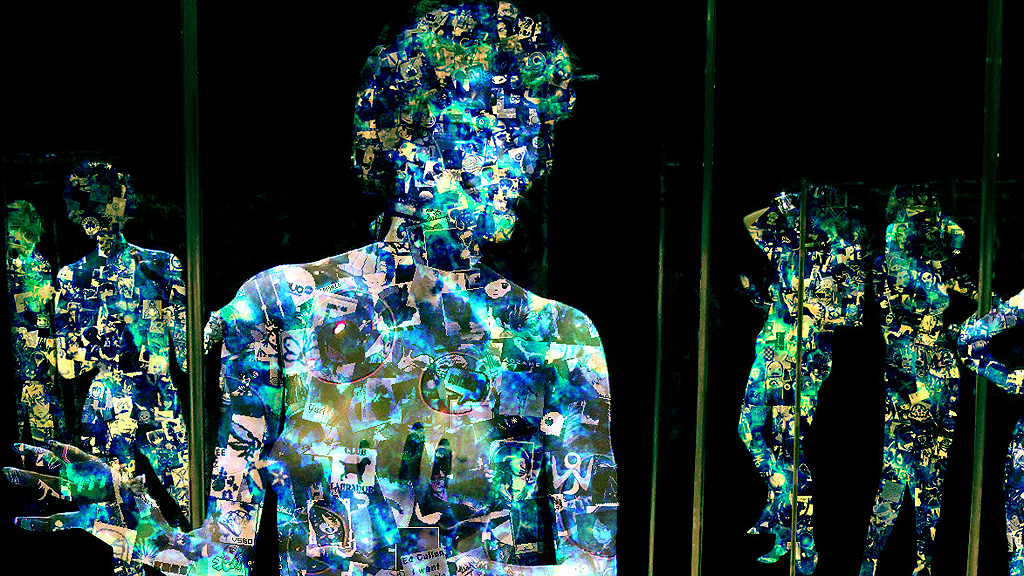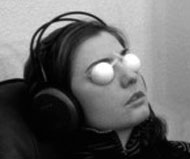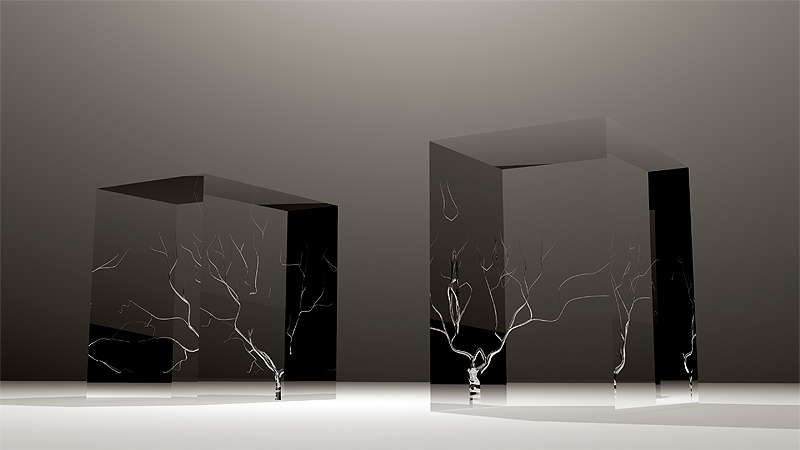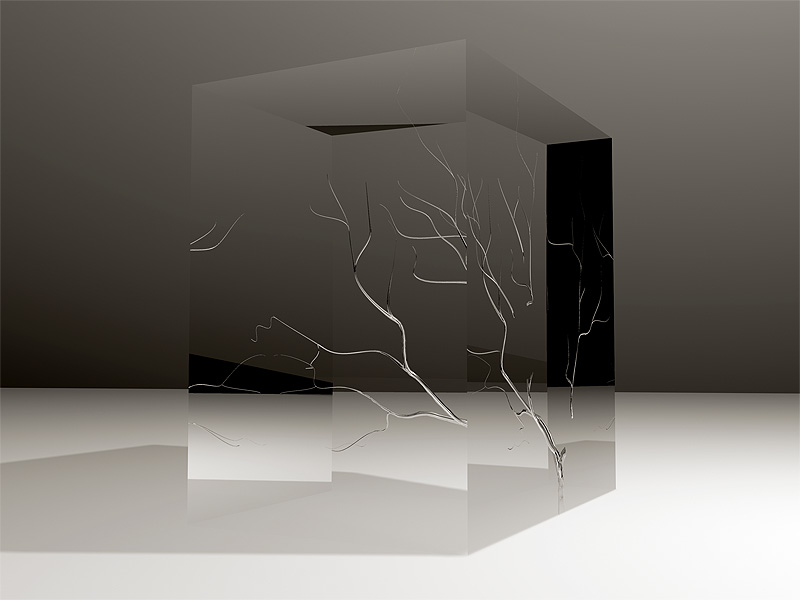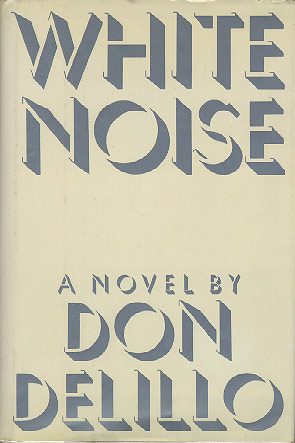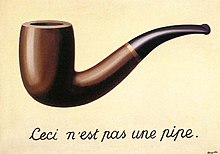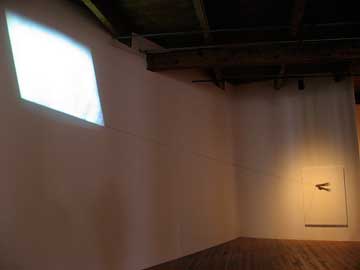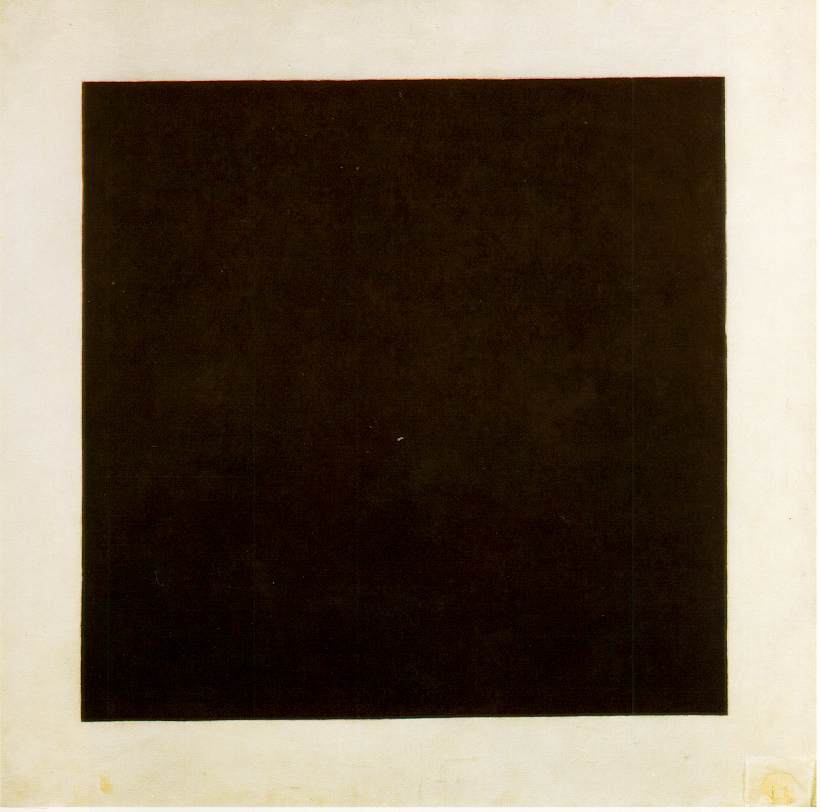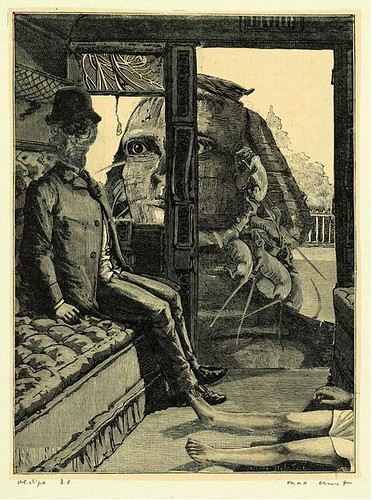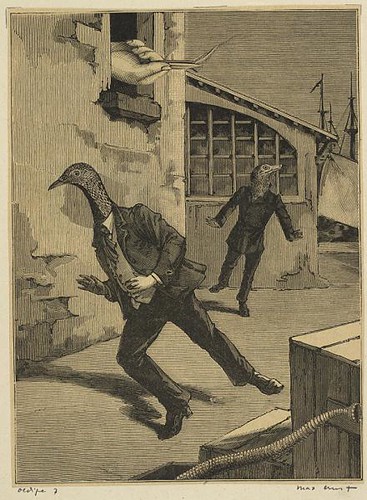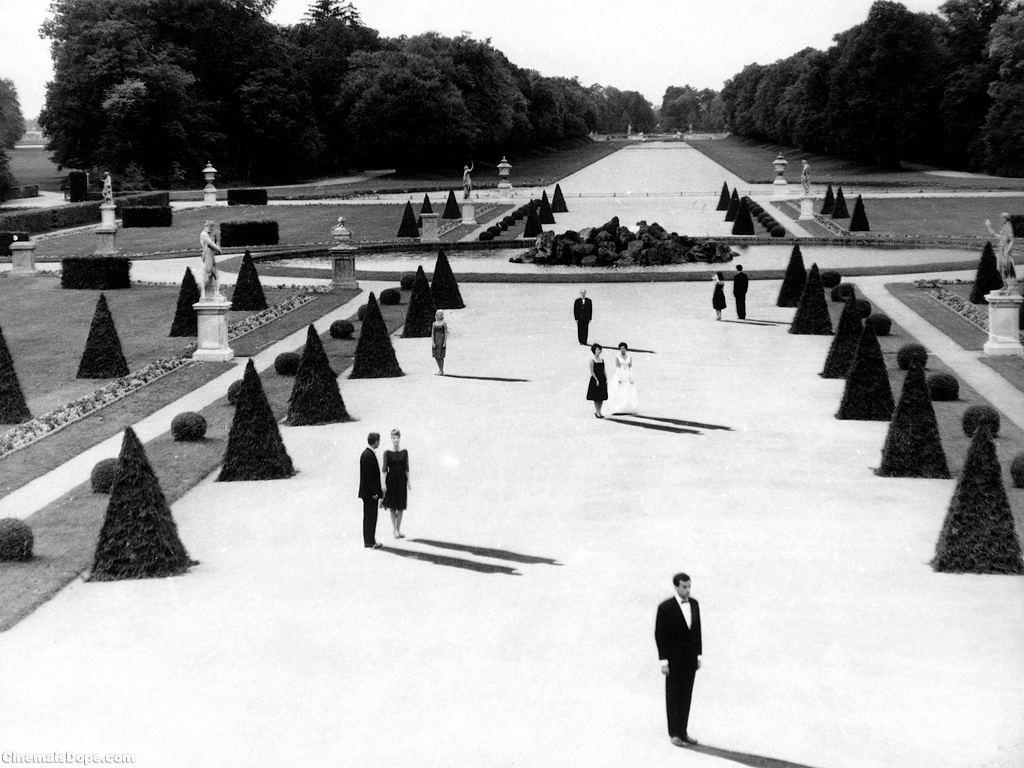Stukken uit "De transparante samenleving" van Gianni Vattimo.
Een alomvattend historisch verhaal als 'de geschiedenis' blijkt niet meer dan een ideologische illusie. Verschillende standpunten werden ingenomen. Modern-zijn wordt zo niet langer als richtinggevende waarde beschouwd. Het postmoderne denken deed daarmee van zich spreken.
Ontheemding blijkt de grond te vormen van de huidige esthetische ervaring. (Walter Benjamin typeert de contemporaine kunst aan de hand van de shockervaring.) De angstervaring is een ervaring van ontheemding. Het accent is op de voortdurende verandering komen te liggen.
De opkomst van de massamedie veroorzaakte een communicatieve chaos en een ontologische ontwrichting. Media waren doorslaggevend in het ontbinden van gecentreerde perspectieven (het verhaal van de geschiedenis, het geloof in de vooruitgang.) In het alomtegenwoordige mediatisering van het leven demonstreerden zij dat het bestaan van een enkelvoudige of werkelijke wereld niet meer dan een fabel was.
De postmoderne esthetische ervaring is er een van een gemeenschap die een onomkeerbare pluralisering heeft ondergaan en die zich in het ideaal van de heterotopie articuleert.
Het 'onstructureren' geeft gestalte aan een nieuwe ervaring van menselijkheid, een postmodern emancipatie-ideaal dat gebaseerd kan worden op een bewustzijn van pluraliteit. In een onophoudelijk proces van verwijzingen naar andere mogelijke werelden worden de grenzen van de leefwereld voortdurend verlegd. Het subject weet vanwege deze vermenigvuldiging van (leef)stijlen en de daarmee samenhandende esthetisering van de ervaring geconfronteerd met een werkelijkheid waarin er altijd meerdere interpretatieve keuzen zullen bestaan. Het subject ontwikkeld zich door de relativiteit en contingentie van een 'zwak denken'.
Het begrip postmodern heeft iets te maken met het feit dat de samenleving er nu een is met een wijd verbreide communicatie, de samenleving van de massamedia.
Het gevoel dat de moderniteit wezenlijk voorbij is. Moderniteit gaat uit van een algemeen perspectief, waarin, zoals ten tijde van de Verlichting, de menselijke geschiedenis gezien wordt als een voortgaand proces van emancipatie, als een steeds betere realisering van het menselijke ideaal. Enkel als er de geschiedenis is kan men spreken van vooruitgang.
Het blijkt niet langer mogelijk de geschiedenis als eenheid te beschouwen, hierdoor eindigt de moderniteit. Een dergelijke opvatting van de geschiedenis vereist het bestaan van een centrum waaromheen de gebeurtenissen verzameld en geordend zijn. De unitaire geschiedenis is een voorstelling van het verleden die de heersende groepen en sociale klassen hebben geconstrueerd. Slechts dat wat relevant schijnt is vanuit het verleden doorgegeven. Er is niet één geschiedenis, maar er zijn alleen beelden van het verleden vanuit verschillende gezichtspunten. Het is een illusie te denken dat er een hoger of allesomvatten gezichtspunt zou zijn dat in staat is alle andere in zich te verenigen.
Crisis van de idee van geschiedenis -> crisis van de idee van de vooruitgang. Als de menselijke gebeurtenissen geen unitair verloop hebben, dan kun je ze ook niet langer beschouwen als een gestage ontwikkeling naar een eindpunt, waarbij een rationeel plan voor innovatie, onderwijs en emancipatie wordt verwezenlijkt. De meeste Verlichtingsdenkers, Hegel, marx, de positivisten, historici van alle gezindten, beschouwden de verwezenlijking van de beschaving, de vorming van de West-Europese mens, als de zin van de geschiedenis.
Einde van het kolonialisme en het imperialisme is ook de communicatiemaatschappij een doorslaggevende factor geweest voor zowel de ontbinding van het geschiedsbegrip als voor het einde van de moderniteit.
De massamedia heeft de postmoderne maatschappij echter niet transparanter, zelfbewuster en meer verlicht gemaakt, maar eerder complex en zelfs chaotisch. Juist in deze relatieve 'chaos' ligt onze hoop op emancipatie.
Theodor Adorno voorspelde dat de radio een algemene homogenisering van de samenleving zou bewerkstelligen, en op haar beurt de vorming van dictaturen en totalitaire regimes zou toestaan en aanmoedigen. Wat er werkelijk gebeurde, ondanks de inspanningen van monopolies en grote kapitalistische ondernemingen, was dat radio, televisie en kranten elementen werden in een algehele explosie en proliferatie van 'Weltanschauungen', van wereldbeschouwingen. Het feit dat steeds meer subculturen het woord nemen, is een onmiskenbaar gevolg van de massamedia. Het Westen bevindt zich in een explosieven situatie, alsof een klaarblijkelijk niet te stuiten pluralisering iedere unitaire opvatting van de wereld en de geschiedenis onmogelijk maakt.
Daardoor is de massamedia-maatschappij het absolute tegendeel van de meer verlichte, meer opgevoede samenleving. Door de massamedia gegeven vrijheid aan zoveel culturen en Weltanschauungen heeft het juist het ideaal van de transparante samenleving verloochend. De toename van de mogelijkheden van informatie over talloze aspecten van de werkelijkheid maakt het steeds moelijker zich een enkelvoudige werkelijkheid voor te stellen. 'Uiteindelijk wordt de werkelijkheid een fabel' voorspelling aldus Nietzsche komt uit.
Werkelijkheid is voor ons eerder het resultaat van intersectie en contaminatie van de door de media verspreide veelheid van beelden, interpretaties en reconstructies, die onderling strijdig zijn en zonder een 'centrale' coordinatie.
In de maatschappij van de media wordt het ideaal van emancipatie dat gemodelleerd is naar een helder zelfbewustzijn, een volledig bewustzijn van iemand die weet hoe de wereld in elkaar zit vervangen door een een emancipatie-ideaal gebaseerd op oscillatie, pluraliteit en de definitieve uitholling van het 'realiteitsbeginsel' zelf. Emancipatie bestaat hier in ontheemding. Veelheid van lokale rationaliteiten: etnische, seksuele, religieuze, culturele of esthetische minderheden die uiteindelijk allemaal voor zichzelf spreken. De emanicipatoire betekenis van de bevrijding van verschillen en dialecten bestaat veeleer in de algemene ontheemding die hun oorspronkelijke ontdekking begeleidt. Als ik mijn dialect spreek in een wereld van dialecten, dan zal ik mij ervan bewust zijn dat dit niet de enige taal is, maar enkel een dialect te midden van vele andere. Nietzsche noemt dit het dromen terwijl je weet dat je droomt.
Dilthey denkt dat de ontmoeting met een kunstwerk (of het verkrijgen van historische kennis) een manier is om in de verbeelding andere vormen van bestaan te ervaren, andere levensvormen dan die waarin we in onze concrete alledaagsheid opgaan. Naarmate we ouder worden, vernauwt ieder van ons zijn levenshorizon, specialiseren we ons, en sluiten we ons op in een bepaalde sfeer van affecties, interesses en bekenden. De esthetische ervaring toont ons andere mogelijke werelden en maakt ons aldus bewust van de relativiteit en contingentie van de 'werkelijke' wereld waartoe we ons hebben beperkt.
In deze pluralistische wereld te leven betekent dat we de vrijheid ervaren als een voortdurend heen en weer gaan tussen erbij horen en ontheemding. Zo'n vrijheid is problematisch. Het kost moeite die oscillatie als vrijheid te begrijpen. We hebben individueel en maatschappelijk namelijk nog steeds een diep nostalgisch verlangen naar de gesloten horizonten die zowel bedreigend als geruststellend zijn. Het bestaan valt niet noodzakelijkherwijs samen met dat wat stabiel, vast en blijvend is, maar eerder van doen heeft met de gebeurtenis, de consensus, de dialoog, de interpretatie. Zij maken het ons mogelijk die ervaring van oscillatie in de postmoderne wereld als kans te zien voor een nieuwe menselijke bestaanswijze.
De intensivering van de communicatieverschijnselen en de toenemende verspreiding van informatie ind e huidige directe verslaggeving via televisie zijn niet zomaar enkele aspecten van de modernisering, maar zijn inz ekere zin het centrum en de diepste betekenis van dat proces. De maatschappij wordt gekenmerkt door de technologieen waarover zij beschikt (McLuhan).
In plaats van zelf-transparantie, is de maatschappij van de menswetenschappen en de veralgemeniseerde communicatie de kant uitgegtaan van wat we, althans algemeen genomen, het 'fabuleren van de wereld' zouden kunnen noemen. De wereldbeelden die we via de media en de menswetenschappen ontvangen, zij het op diverse niveaus, zijn niet zomaar verschillende interpretaties van een 'werkelijkheid' die hoe dan ook 'gegeven' is, maar maken de objectiviteit van deze wereld zelf uit. "Er zijn geen feiten, alleen maar interpretaties", aldus Nietzsche, die ook heeft geschreven dat "de ware wereld uiteindeiljk een fabel ging worden."
De wereld is niet zozeer object van mogelijke 'objectieve' kennis, als wel de plaats waar symbolische systemen geproduceerd worden.
De onmythologisering van de onmythologisering kunnen we beschouwen als de eigenlijke overgang van modern naar postmodern. Probeert de 'terugkeer' van de mythe terug te brengen in de samenleving.
Naderhand gevonden opsommings structuur
http://users.ugent.be/~wbossart/p/leessels/vatti.html
